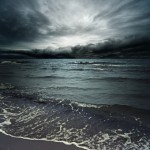Weekly Wrap Volume 52
 A Brief History of the Ballpoint Pen and Whether NASA Really Spent Millions Developing a Pressurized Version Instead of Just Using Pencils
A Brief History of the Ballpoint Pen and Whether NASA Really Spent Millions Developing a Pressurized Version Instead of Just Using Pencils
The humble ballpoint pen is an item so ubiquitous the chances of you not having one near you right now are so low E.T could probably give you the percentage on his right hand. Few people realize just how much technology, craftsmanship and effort goes into creating a single pen- probably because you can buy 30 of them for a few dollars, only to mysteriously have them all disappear within a week. As the name would suggest, ballpoint pens work by utilizing tiny metal ball bearings. In the case of the most famous ballpoint pens of all, Bic, the ball is commonly made from tungsten carbide, which is… (more)
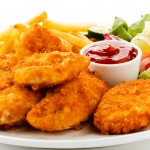 The Cornell Professor Who Gave Us the Chicken Nugget
The Cornell Professor Who Gave Us the Chicken Nugget
Chicken nuggets are delicious. I know this isn’t a particularly controversial statement. Despite pink slime, chemical preservatives, and sometimes questionable nutritional value, it’s hard to argue the basic point that these deep-fried, previously frozen, nugget-shaped “chicken” pieces are at least somewhat appealing to the human taste bud. The common assumption is that McDonald’s was the first to give us these small morsels of “food.” But that is untrue. No, the story of the chicken nugget begins with Robert C. Baker, a Cornell professor and the so-called “George Washington Carver of poultry.” Growing up in the Finger Lake region of New York, in the small town of Newark, Baker was poised to take over his family’s farm, which grew… (more)
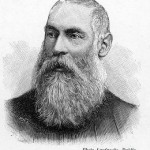 Why the Mass Avoidance of Some Business is Called “Boycotting”
Why the Mass Avoidance of Some Business is Called “Boycotting”
This term was named after a nineteenth century Englishman, Captain Charles C. Boycott (who originally had the surname “Boycatt,” but the family changed the spelling when he was nine years old). If you guessed that at a certain point Captain Boycott became quite unpopular with the masses, you’re correct. Shortly before Boycott would find himself boycotted, the situation in Ireland was that just .2% of the population owned almost every square inch of land in Ireland. Most of the owners of the land also didn’t… (more)
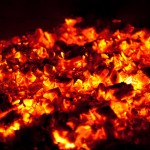 The Town That’s Been Burning for Over Half a Century
The Town That’s Been Burning for Over Half a Century
The town of Centralia, Pennsylvania has been on fire for more than fifty years. Founded in 1862, Centralia popped up in response to the booming coal mining industry. Anthracite coal, a type of coal once in high demand for heating homes, lay under the town and surrounding area in massive quantities. (In fact, approximately 95% of all anthracite coal in the United States is in Pennsylvania.) Some estimates put the total amount of coal under Centralia before mining began at 25 million tons. So it’s no surprise that the town thrived for a while with over two thousand… (more)
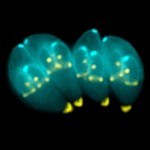 The Parasite That Could Be Living Inside You Right Now, Toxoplasma Gondii
The Parasite That Could Be Living Inside You Right Now, Toxoplasma Gondii
If we were to tell you that there is a parasite out there that can infect virtually any warm-blooded creature on Earth; is found just about everywhere; approximately 33% of humans are infected; and is also mysteriously linked to people committing suicide and brain cancer, then we told you that it was most commonly found in cats, you’d say we had to be lying because cats would be extinct if we all knew that. (Well, if they weren’t so adorable.) It turns out, we’re not lying and the truth gets even more interesting. Known as Toxoplasma gondii, the parasite can cause a disease aptly called toxoplasmosis in virtually any warm-blooded creature… (more)
Bonus Quick Facts:
- The “M&M” was modeled after a candy Forrest Mars, Sr. encountered while in Spain during the 1930s. During the Spanish civil war there, he observed soldiers eating chocolate pellets with a hard shell of tempered chocolate. This prevented the candies from melting which was essential when included in soldiers’ rations as they were. And in case you’re wondering, “M&M” stands for “Mars and Murrie,” after Forrest Mars Sr. and Bruce Murrie, son of famed Hersey president William Murrie.
- Popcorn kernels that don’t pop are called “old maids” or “spinsters.” Kernels that don’t contain enough moisture or have cracks in their outer shell that allows the steam to escape will typically become old maids.
- A Young Carl Sagan was one of the scientists hired in the U.S.’s Cold War plan to drop a nuclear bomb on the moon. Specifically, Sagan was hired to study how exactly the cloud would expand on the moon so that they could make sure it would be clearly visible from Earth, which was the whole point of the project.
- Dave Thomas of Wendy’s introduced the KFC trademark sign featuring a revolving red-striped bucket of chicken. He was also instrumental in saving a struggling KFC by revolutionizing the menu, focusing on a few staple meals (as virtually all fast-food restaurants now do), rather than many like a normal restaurant. He used the money he earned while working a few KFC franchises to then start his own fast-food company.
- The male ostrich is capable of making a “roaring” noise not too dissimilar from a lion’s roar, but tending to add a hiss with it.
- Keanu Reeves donated about $75 million from his Matrix earnings to the costume and special effects teams who worked on the films.
- WD-40 got its name from the fact that it was the 40th try at creating a Water Displacement substance.
- Matt Groening, the creator of The Simpsons, named many of the characters after his own family such as: Homer (his dad), Margaret (his mom), Maggie and Lisa (his sisters), and Abe (his grandfather). His brother Mark was the inspiration for Bart. He chose to name the character “Bart,” though, because it was an anagram for “Brat.”
- Bananas do not grow on trees. Rather, they grow from a root structure that produces an above ground stem. The plant is specifically classified as an arborescent (tree-like) perennial herb; in fact, it is the largest herbaceous flowering plant. Even more surprising than the banana plant being an herb is that the banana itself is a berry.
- The word “salad” comes from the ancient Roman practice of salting leaf vegetables; “salad” literally means “salted.”
Other Interesting Stuff:
 Why Can’t You Have Fences Over a Certain Height in the Front or Backyard?
Why Can’t You Have Fences Over a Certain Height in the Front or Backyard?
The primarily purposes of a fence include to keep animals in, people out, and perhaps even so others can’t see into your yard. But if this is the case, why are their laws that limit how tall fences can be? Also, what would happen if you ignored the law and built a monstrous fence anyway, or planted a row of tall trees around your property instead to try to get around the fence height restrictions? Contrary to what you’d expect from such an innocuous object as a fence built on your own property, the laws surrounding the building and regulation of fences are hugely complex. As noted by the… (more)
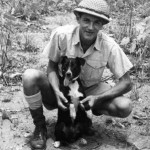 Five War Heroes Who Also Happened to Be Dogs
Five War Heroes Who Also Happened to Be Dogs
Heroes come in many forms; some are even furry and four-legged. Due in part to their superior ability to sniff and hear trouble, dogs have long been a fantastic ally and a great protector of humans. After all, it was Lassie who, through a series of barks, told the grown-ups that Timmy was in trouble again (Note: Timmy never actually fell down a well. Mineshaft, sure, but no well.) Dogs can also be quite brave and have been known to run into dangerous situations without a moment of hesitation. Throughout history, several dogs have gained a reputation as being courageous in wartime. Here are the stories of five such dogs that became war heroes and helped saved human… (more)
There are approximately 200 different types of headaches, classified in two main groups: primary and secondary. There are in the neighborhood of 42 types of primary headaches and 157 secondary headaches (unless I lost count, but should you want to verify those numbers, or just need a sleep-aid, feel free to review the 233 page article that outlines them; it’s in the references!) “Primary” simply means that the cause of the headache is the problem itself, an example would be a migraine. “Secondary” means the problem is something other than a headache and the headache is just a symptom of that problem. One example of this being a hemorrhagic stroke… (more)
May 19, 1780 began like any other day. Then, between 10:00 a.m. and 11:00 a.m., the sky above most of New England grew dark and eventually pitch black. The darkness was witnessed from Maine to New Jersey, plunging what was then almost half of America into fear and chaos. The event was reported to last well into the evening in some places—even the moon and stars were fully obscured. We aren’t talking your run-of-the-mill blackout—obviously, there were no electrical lights or fallen power lines at the time. The cause of the darkness wasn’t a solar eclipse, either, as far as scientists can tell. It also wasn’t a thunderstorm, though some areas of New England did have rain that morning. So what caused a darkness so deep… (more)
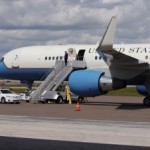 Does the President Have to Report Food, Transportation and Other Such “Gifts” from Taxpayers on His Taxes?
Does the President Have to Report Food, Transportation and Other Such “Gifts” from Taxpayers on His Taxes?
No. And although it’s difficult to find an official explanation (or even a detailed one), I think the answer lies in the United States’ ridiculously complicated tax code. Gifts :The transportation, security, housing and other benefits received by the President and his family are not gifts. But assuming they were, neither Barack nor Michelle would have to pay any tax imposed. Under U.S. Income Tax law, in particular 26 USC § 102(a), gifts are, with some exceptions, specifically excluded from taxable income: “Gross income does not include the value of property acquired by gift, bequest, devise, or inheritance….” (more)
This Week’s Podcast Episodes:
- Podcast Episode #210: Hubble
- Podcast Episode #211: Ahoy Hoy
- Podcast Episode #212: Christmas Island and Its Crabs and Ants
- Podcast Episode #213: The Greatest Scientist You’ve Never Heard Of
- Podcast Episode #214: From Runaway Slave to Bestselling Author and Adviser to Presidents
Quote of the Week:
- “By working faithfully eight hours a day, you may eventually get to be boss and work twelve hours a day…” -Robert Frost
| Share the Knowledge! |
|


